Opinion & Analysis
Eight shots that deserve a mulligan
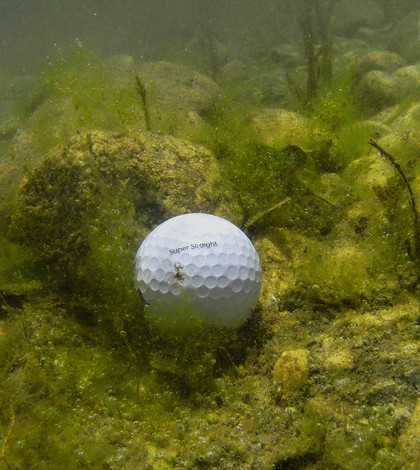
Let’s start by clarifying that we are not here to debate the use of mulligans. This article, much like science fiction movies that force you to accept certain realities as part of the plot (don’t get me started on any movie about guys going up in space to stop asteroids), is based around the notion that mulligans do exist and are used by many around the globe. Got that?
I’m not here to argue for or against the use of mulligans. On that topic, I will be standing over there in the corner, with my fingers in ear humming loud noises and pretending I don’t see anything. So let’s accept the premise that mulligans exist, shall we? What shots deserve them the most? What shots make you want to walk up, grab the ball and put it right back down where it was before you ruined your round and four hours of your day?
There really is nothing worse then coasting along around par and then making an octal bogey because you, well you….you probably did one of the below things. Should you really shoot an 80 instead of a 76 because of one swing? Oh crap, don’t answer that, we are not here to discuss that. We are here to discuss why you ended up with that 80. And here are some guesses:
1) The OB first drive
A classic staple of any terrible round. You get to the course early, you sink every putt on the practice green, you hit pure shot after pure shot on the range. It’s 8:15am and the sun is up, not a cloud in the sky, not super windy — going to be a great day. Maybe you make a little small talk on the first tee, “Hey Jim, what did you get up to last night?” followed by a few obviously predictable quips about your married friend being forced to do something by his wife, your single friend having a few too many and your workaholic friend already answering texts and emails on his Blackberry. Life is good. Oh it’s your turn to tee off now, no problem. Just stick that tee in and take a couple of practice swings from good measure. Start your nice smooth backswing and smack! Oh crap. It started a little left but might be OK, might be OK….oh god, please let it be OK. Aaaaaand, it’s not OK. Here’s some advice: just put the 80 on the card and save yourself four hours.
2) The 2-foot lip out early in the round
On the surface, it’s just one shot. But we all know that’s not true right? Usually the dreaded 2-foot lip out is either for birdie or par on one of the first three holes. Still, at that time you’re still optimistic. Maybe you started par-bogey and then hit it tight on the third hole — let’s say it’s a par 3. Walking up to the ball you’re thinking,
“No problem. Tap this in and get back to even and I’m golden. I’ve got the rest of the round ahead of me.”
You probably take for granted that you are going to make it. Maybe don’t give it a full read, I mean, it’s just a tap in right? You are not going to miss this. You might even say, “Guys do you mind if I just tap this one in to get out of your way?” As soon as the ball leaves the putter face you know something is wrong. It starts too far right. You want to reach out and stop it but you know you can’t. You sheepishly look at your playing partners who give you the “Hey that’s golf” look. In the end, it’s just one shot. Yeah right. What are the odds of you making par on the next hole? The smart money is not on yes.
3) The disastrous second — going for a par 5 in two
This shot has been frustrating golfers for years. The par 5 is the hole golfers of all skills and abilities have visions of making birdie on. It’s usually the first hole you birdie when you take up golf, and it’s the hole that stabilizes your round as you get better, either by getting you back into your round, or just ending a ride on the bogey train. Golfers of all abilities step up to the tee on par 5’s expecting good things. And that feeling only gets stronger and stronger after you knock one down the fairway and begin your walk to the ball with visions of making a 4, or god willing, a 3. But then something happens, the group on the green seems to be taking way too long.
Why are they lining up that putt from a foot? Why doesn’t he just pick it up? How many guys are still in this hole?
It seems like they’ve been on that green for 10 minutes now. Putting the ball and marking, putting and marking — they look like they’re passing a hockey puck around up there. FINALLY, the green clears and it’s go time. Except you rush it a bit don’t you? Your adrenaline was flowing, and the pressure of hitting a good shot built up when your group was forced to wait. There were trees on the right but no big deal, only a snap hook could…Oh boy, that swing felt a little quick.
4) The stubbed chip
I like to think of the stubbed chip as a subtle killer, because you never really expect it to happen, at least not once you’ve gotten to be a better player. Let’s say you miss the green on an approach, so you walk up to the ball still expecting to have at least a semi-makeable putt for par. Worst case scenario, you’re walking off with bogey and that’s no big deal, because people make bogeys all the time, even on easier holes — they’re certainly not round killers. That changes with the stubbed chip.
It’s an instantaneous feeling too — you feel the blade dig a bit too much and you know you’re in trouble. Even worse is if you’re chipping over a bunker and you stub it enough to leave it in the sand. Suddenly, your positive thinking about making par is suddenly a desperate grind to avoid making double bogey. And you tend to usually make that double bogey, don’t you? The second chip after the stubbed one is always good but not great. How can it be great? In your head you’re just hoping not to stub it again. So you knock it to 4.5 feet and then miss the putt. Golf is a stupid game.
5) The bladed bunker shot
The bladed bunker shot is worse then its cousin, the leave-it-in-the-bunker shot. If you leave it in the bunker you are usually no worse off except for the fact that you are in fact, one shot worse off. And usually your next lie is on an upslope, plus your frustration with your first bunker shot actually helps you with your next one. I can’t even count how many times I’ve left it in the bunker and then put my next shot to tap in range. When you are mad you tend to follow through better and finish your swing, which is exactly what you need to do to escape the sand. The bladed bunker shot is far worse though, because you usually end up in a terrible spot. Usually you’re waaaaay over the green in some serious cabbage — you generally aren’t going to get up and down.
The bladed bunker shot is almost an instant double bogey. That’s probably why guys leave shots in bunker more then they blade them out, because they are scared of this shot. Heck just knowing it can happen is scary. If you are in a bunker with OB on the other side of the green, you half consider swallowing that cyanide pill you keep in your pocket from your day job of being a spy. Oops, sorry that is my fantasy day job. But you get the idea.
6) The botched escape shot
This shot is always preceded by the following thought process:
“Hmmm, that opening in the trees looks mighty narrow. Probably should just punch out. But wait, it’s a Saturday round with my buddies, why would I punch out? Imagine if I hit that shot? We can talk about it after the round over beers, the great escape shot I hit on No. 8. Plus my lie isn’t too bad, so I bet i can do it. I’m sure I can do it. And who cares this round means nothing. I’m totally going for this.”
Let me put this pretty simply for you — yes that opening is narrow, and yes your ball is going to hit that tree and ricochet to an even worse spot where you will then make the smart decision you should have made to just punch out. Way to go man, you just turned probable bogey with a chance at par to an almost certain double with a chance for worse. The phrase “take your medicine” exists for a reason, and it’s not just so you literally take your medicine (which by the way you should also probably do). Next time just hit it back onto the fairway, OK Phil?
7) The uncommitted tee shot
You know the feeling, it’s a 360-yard par 4 and you could easily hit either 3 wood or driver. Which one do you go with?
You haven’t been hitting your driver straight today, eh big guy? Maybe it’s time to pull out the 3 wood and just pipe one down the fairway? You’ll still have a pitching wedge or 9 iron into the green. But you like hitting driver, of course, and if you hit driver you leave yourself a wedge in. Birdie time baby. No one plays this game to make pars. Pars are boring, plus you’re 2-over, so a birdie here gets you back close to par. Maybe you’ll shoot a great round. Reach for that driver, yup, we’re going with driver. Pull it out and take a couple of practice swings, just knock one down the fairway and stick it close. There isn’t even a lot of trouble on this hole so it’s all good. OK nice and easy backswing, wait a minute you don’t want to swing too hard here it’s still a short hole, just want to cozy it down there. Wait, should I be using 3 wood? Crap, I’m starting my downswing now, just steer it and …..arggggghhhh. You don’t finish your swing and your tee shot just hit someone doing garden work across the street. Aren’t 360-yard par 4’s supposed to be easy? Nice six my friend.
8) The hosel “fade”
Yes we know the shot I’m talking about. There are many words for it that cannot be repeated here, lest they be caught like a virus. It’s the most dreaded shot in golf. The one that imparts not just score damage, but psychological damage as well. I’m reminded of the match play tournament where Hunter Mahan hit a real beauty onto a peripheral fairway, looked somewhat sheepish, and then went over to that fairway and stuck a wedge close and walked off with par.
You know what though, you are not Hunter Mahan (unless you are literally Hunter Mahan and are reading this. If you are, hey, what’s up Hunter? Nice win at that tournament by the way, big fan and you know, thanks for taking the time to read this far). But where was I? Ah yes, you are probably not Hunter Mahan. So what are you going to do after the hosel fade? You are going to address the next shot so far out and close to the toe that you are either going to miss the ball completely, or hit a flat out terrible shot. You probably aren’t going to follow through either because you are so anxious to see if you hosel-rocketed it again. Basically, this shot is a disaster that torpedoes your round and stays in your head longer then the image of Henrik Stenson stripping down to his boxers to play a shot out of the water (wait, why exactly is that still in my head?). This shot requires not just an actual mulligan, but a mental one aswell. This shot requires the full out Ben-Affleck-in-Paycheck memory erasing treatment, which is also required for anyone who’s seen the movie “Paycheck”.
So, I’m not saying it’s OK to use mulligans. That’s for another story. But if you’ve hit any of the eight shots above, i just want to tell you, I understand. We all understand.
Click here for discussion in the “Golf Talk” forum.
- LIKE0
- LEGIT0
- WOW0
- LOL0
- IDHT0
- FLOP0
- OB0
- SHANK0
Opinion & Analysis
The Wedge Guy: What really makes a wedge work? Part 1

Of all the clubs in our bags, wedges are almost always the simplest in construction and, therefore, the easiest to analyze what might make one work differently from another if you know what to look for.
Wedges are a lot less mysterious than drivers, of course, as the major brands are working with a lot of “pixie dust” inside these modern marvels. That’s carrying over more to irons now, with so many new models featuring internal multi-material technologies, and almost all of them having a “badge” or insert in the back to allow more complex graphics while hiding the actual distribution of mass.
But when it comes to wedges, most on the market today are still single pieces of molded steel, either cast or forged into that shape. So, if you look closely at where the mass is distributed, it’s pretty clear how that wedge is going to perform.
To start, because of their wider soles, the majority of the mass of almost any wedge is along the bottom third of the clubhead. So, the best wedge shots are always those hit between the 2nd and 5th grooves so that more mass is directly behind that impact. Elite tour professionals practice incessantly to learn to do that consistently, wearing out a spot about the size of a penny right there. If impact moves higher than that, the face is dramatically thinner, so smash factor is compromised significantly, which reduces the overall distance the ball will fly.
Every one of us, tour players included, knows that maddening shot that we feel a bit high on the face and it doesn’t go anywhere, it’s not your fault.
If your wedges show a wear pattern the size of a silver dollar, and centered above the 3rd or 4th groove, you are not getting anywhere near the same performance from shot to shot. Robot testing proves impact even two to three grooves higher in the face can cause distance loss of up to 35 to 55 feet with modern ‘tour design’ wedges.
In addition, as impact moves above the center of mass, the golf club principle of gear effect causes the ball to fly higher with less spin. Think of modern drivers for a minute. The “holy grail” of driving is high launch and low spin, and the driver engineers are pulling out all stops to get the mass as low in the clubhead as possible to optimize this combination.
Where is all the mass in your wedges? Low. So, disregarding the higher lofts, wedges “want” to launch the ball high with low spin – exactly the opposite of what good wedge play requires penetrating ball flight with high spin.
While almost all major brand wedges have begun putting a tiny bit more thickness in the top portion of the clubhead, conventional and modern ‘tour design’ wedges perform pretty much like they always have. Elite players learn to hit those crisp, spinny penetrating wedge shots by spending lots of practice time learning to consistently make contact low in the face.
So, what about grooves and face texture?
Grooves on any club can only do so much, and no one has any material advantage here. The USGA tightly defines what we manufacturers can do with grooves and face texture, and modern manufacturing techniques allow all of us to push those limits ever closer. And we all do. End of story.
Then there’s the topic of bounce and grinds, the most complex and confusing part of the wedge formula. Many top brands offer a complex array of sole configurations, all of them admittedly specialized to a particular kind of lie or turf conditions, and/or a particular divot pattern.
But if you don’t play the same turf all the time, and make the same size divot on every swing, how would you ever figure this out?
The only way is to take any wedge you are considering and play it a few rounds, hitting all the shots you face and observing the results. There’s simply no other way.
So, hopefully this will inspire a lively conversation in our comments section, and I’ll chime in to answer any questions you might have.
And next week, I’ll dive into the rest of the wedge formula. Yes, shafts, grips and specifications are essential, too.
- LIKE22
- LEGIT6
- WOW1
- LOL1
- IDHT2
- FLOP2
- OB1
- SHANK1
Golf's Perfect Imperfections
Golf’s Perfect Imperfections: Amazing Session with Performance Coach Savannah Meyer-Clement

In this week’s episode, we spent some time with performance coach Savannah Meyer-Clement who provides many useful insights that you’ll be able to implement on the golf course.
- LIKE0
- LEGIT0
- WOW0
- LOL0
- IDHT0
- FLOP0
- OB0
- SHANK0
19th Hole
Vincenzi’s 2024 RBC Heritage betting preview: Patrick Cantlay ready to get back inside winner’s circle

Just a two-hour drive from Augusta National, the PGA TOUR heads to Harbour Town Golf Links in Hilton Head Island, S.C. Hilton Head Island is a golfer’s paradise and Harbour Town is one of the most beautiful and scenic courses on the PGA TOUR.
Harbour Town Golf Links is a par-71 that measures 7,121 yards and features Bermuda grass greens. A Pete Dye design, the course is heavily tree lined and features small greens and many dog legs, protecting it from “bomb-and-gauge” type golfers.
The field is loaded this week with 69 golfers with no cut. Last year was quite possibly the best field in RBC Heritage history and the event this week is yet another designated event, meaning there is a $20 million prize pool.
Most of the big names on the PGA Tour will be in attendance this week with the exceptions of Hideki Matsuyama and Viktor Hovland. Additionally, Webb Simpson, Shane Lowry, Gary Woodland and Kevin Kisner have been granted sponsors exemptions.
Past Winners at Harbour Town
- 2023: Matt Fitzpatrick (-17)
- 2022: Jordan Spieth (-13)
- 2021: Stewart Cink (-19)
- 2020: Webb Simpson (-22)
- 2019: CT Pan (-12)
- 2018: Sotoshi Kodaira (-12)
- 2017: Wesley Bryan (-13)
- 2016: Branden Grace (-9)
- 2015: Jim Furyk (-18)
In this article and going forward, I’ll be using the Rabbit Hole by Betsperts Golf data engine to develop my custom model. If you want to build your own model or check out all of the detailed stats, you can sign up using promo code: MATTVIN for 25% off any subscription package (yearly is best value).
Key Stats For Harbour Town
Let’s take a look at key metrics for Harbour Town Golf Links to determine which golfers boast top marks in each category over their past 24 rounds.
Strokes Gained: Approach
Strokes Gained: Approach is exceedingly important this week. The greens at Harbour Town are about half the size of PGA TOUR average and feature the second-smallest greens on the tour. Typical of a Pete Dye design, golfers will pay the price for missed greens.
Total SG: Approach Over Past 24 Rounds
- Scottie Scheffler (+1.27)
- Tom Hoge (+1.27)
- Corey Conners (+1.16)
- Austin Eckroat (+0.95)
- Cameron Young (+0.93)
Good Drive %
The fairways at Harbour Town are tree lined and feature many dog legs. Bombers tend to struggle at the course because it forces layups and doesn’t allow long drivers to overpower it. Accuracy is far more important than power.
Good Drive % Over Past 24 Rounds
- Brice Garnett (88.8%)
- Shane Lowry (+87.2%)
- Akshay Bhatia (+86.0%)
- Si Woo Kim (+85.8%)
- Sepp Straka (+85.1%)
Strokes Gained: Total at Pete Dye Designs
Pete Dye specialists tend to play very well at Harbour Town. Si Woo Kim, Matt Kuchar, Jim Furyk and Webb Simpson are all Pete Dye specialists who have had great success here. It is likely we see some more specialists near the top of the leaderboard this week.
SG: TOT Pete Dye per round over past 36 rounds:
- Xander Schauffele (+2.27)
- Scottie Scheffler (+2.24)
- Ludvig Aberg (+2.11)
- Brian Harman (+1.89)
- Sungjae Im (+1.58)
4. Strokes Gained: Short Game (Bermuda)
Strokes Gained: Short Game factors in both around the green and putting. With many green-side bunkers and tricky green complexes, both statistics will be important. Past winners — such as Jim Furyk, Wes Bryan and Webb Simpson — highlight how crucial the short game skill set is around Harbour Town.
SG: SG Over Past 24 Rounds
- Jordan Spieth (+1.11)
- Taylor Moore (+1.02)
- Wyndham Clark (+0.98)
- Mackenzie Hughes (+0.86)
- Andrew Putnam (+0.83)
5. Greens in Regulation %
The recipe for success at Harbour Town Golf Links is hitting fairways and greens. Missing either will prove to be consequential — golfers must be in total control of the ball to win.
Greens in Regulation % over past 24 rounds:
- Brice Garnett (+75.0%)
- Scottie Scheffler (+69.9%)
- Corey Conners (+69.0%)
- Shane Lowry (+68.3%)
- Patrick Rodgers (+67.6%)
6. Course History
Harbour Town is a course where players who have strong past results at the course always tend to pop up.
Course History over past 24 rounds:
- Patrick Cantlay (+2.34)
- Cam Davis (+2.05)
- J.T. Poston (+1.69)
- Justin Rose (+1.68)
- Tommy Fleetwood (+1.59)
The RBC Heritage Model Rankings
Below, I’ve compiled overall model rankings using a combination of the five key statistical categories previously discussed — SG: Approach (24%), Good Drives (20%), SG: SG (14%), SG: Pete Dye (14%), GIR (14%), and Course History (14%)
- Shane Lowry
- Russell Henley
- Scottie Scheffler
- Xander Schauffele
- Corey Conners
- Wyndham Clark
- Christiaan Bezuidenhout
- Matt Fitzpatrick
- Cameron Young
- Ludvig Aberg
2024 RBC Heritage Picks
Patrick Cantlay +2000 (FanDuel)
With the exception of Scottie Scheffler, the PGA Tour has yet to have any of their star players show peak form during the 2024 season. Last week, Patrick Cantlay, who I believe is a top-5 players on the PGA Tour, took one step closer to regaining the form that’s helped him win eight events on Tour since 2017.
Cantlay limped into the Masters in poor form, but figured it out at Augusta National, finishing in a tie for 20th and ranking 17th for the week in Strokes Gained: Ball Striking. The former FedEx Cup champion will now head to one of his favorite golf courses in Harbour Town, where he’s had immaculate results over the years. In his six trips to the course, he’s only finished worse than 7th one time. The other finishes include three third places (2017, 2019, 2023) and one runner-up finish (2022). In his past 36 rounds at Harbour Town, Cantlay ranks 1st in Strokes Gained: Total per round at the course by a wide margin (+2.36).
Cantlay is winless since the 2022 BMW Championship, which is far too long for a player of his caliber. With signs pointing to the 32-year-old returning to form, a “signature event” at Harbour Town is just what he needs to get back on the winning track.
Tommy Fleetwood +3000 (FanDuel)
I truly believe Tommy Fleetwood will figure out a way to win on American soil in 2024. It’s certainly been a bugaboo for him throughout his career, but he is simply too talented to go another season without winning a PGA Tour event.
At last week’s Masters Tournament, Fleetwood made a Sunday charge and ended up finishing T3 in the event, which was his best ever finish at The Masters. For the week, the Englishman ranked 8th in the field in Strokes Gained: Approach, 10th in Strokes Gained: Ball Striking and 16th in Strokes Gained: Putting.
Harbour Town is a perfect layout for Fleetwood, and he’s had relative success at this Pete Dye design in the past. In his four trips to the course, he’s finished inside of the top 25 three times, with his best finish, T10, coming in 2022. The course is pretty short and can’t be overpowered, which gives an advantage to more accurate players such as Fleetwood. Tommy ranks 8th in the field in Good Drive % and should be able to plot his way along this golf course.
The win is coming for Tommy lad. I believe there’s a chance this treasure of a golf course may be the perfect one for him to finally break through on Tour.
Cameron Young +3300 (FanDuel)
Cameron Young had a solid Masters Tournament last week, which is exactly what I’m looking for in players who I anticipate playing well this week at the RBC Heritage. He finished in a tie for 9th, but never felt the pressure of contending in the event. For the week, Young ranked 6th in Strokes Gained: Off the Tee and 6th in Strokes Gained: Ball Striking.
Despite being one of the longest players off the tee on the PGA Tour, Young has actually played some really good golf on shorter tracks. He finished T3 at Harbour Town in 2023 and ranks 20th in the field in Good Drive% and 16th in Greens in Regulation in his past 24 rounds. He also has strong finishes at other shorter courses that can take driver out of a players hand such as Copperhead and PGA National.
Young is simply one of the best players on the PGA Tour in 2024, and I strongly believe has what it takes to win a PGA Tour event in the very near future.
Corey Conners +5500 (FanDuel)
Corey Conners has had a disappointing year thus far on the PGA Tour, but absolutely loves Harbour Town.
At last week’s Masters Tournament, the Canadian finished T30 but ranked 20th in the field in Strokes Gained: Approach. In his past 24 rounds, Conners ranks 3rd in the field in Strokes Gained: Approach, 3rd in Greens in Regulation % and 24th in Good Drive %.
In Conners’ last four trips to Harbour Town, his worst finish was T31, last season. He finished T4 in 2021, T12 in 2022 and ranks 8th in Strokes Gained: Total at the course over his past 36 rounds.
Conners hasn’t been contending, but his recent finishes have been encouraging as he has finished in the top-25 in each of his past three starts prior to The Masters, including an impressive T13 at The PLAYERS. His recent improvement in ball striking as well as his suitability for Harbour Town makes Conners a high upside bet this week.
Shane Lowry (+7500) (FanDuel)
When these odds were posted after Lowry was announced in the field, I have to admit I was pretty stunned. Despite not offering much win equity on the PGA Tour over the last handful of years, Shane Lowry is still a top caliber player who has the ability to rise to the top of a signature event.
Lowry struggled to score at The Masters last week, but he actually hit the ball really well. The Irishman ranked 1st for Strokes Gained: Approach on the week and 7th in Strokes Gained: Ball Striking. As usual, it was the putter that let him down, as he ranked 60th in the field in Strokes Gained: Putting.
Harbour Town is most definitely one of Lowry’s favorite courses on the PGA Tour. In his six starts there, he’s finished in the top 10 three times, including third twice. Lowry is sensational at Pete Dye designs and ranks 7th in Strokes Gained: Total in his past 36 rounds on Dye tracks.
Lowry is perfect for Harbour Town. In his past 24 rounds, he ranks 5th in Strokes Gained: Approach, 2nd in Good Drive% and 5th in Green in Regulation %. If he figures it out on the greens, Shane could have his first win in America since 2015.
Lucas Glover +12000 (FanDuel)
This is one of my weekly “bet the number” plays as I strongly believe the odds are just too long for a player of Glover’s caliber. The odds have been too long on Glover for a few weeks now, but this is the first event that I can get behind the veteran being able to actually contend at.
Glover is quietly playing good golf and returning to the form he had after the understandable regression after his two massive victories at the end of 2023. He finished T20 at The Masters, which was his best ever finish at Augusta National. For the week, Lucas ranked 18th for Strokes Gained: Approach and 20th in Strokes Gained: Ball Striking.
Over his past 24 rounds, Glover ranks 9th in Strokes Gained: Approach and 13th in Good Drive %. Harbour Town is a short course that the 44-year-old will be able to keep up with the top players on Tour off the tee. He’s played the course more than 20 times, with mixed results. His best finishes at Harbour Town include a T7 in 2008, but recently has a finish of T21 in 2020.
Glover has proven he can contend with the stars of the Tour on any given week, and this number is flat out disrespectful.
- LIKE30
- LEGIT5
- WOW2
- LOL1
- IDHT1
- FLOP2
- OB0
- SHANK2
-

 19th Hole1 week ago
19th Hole1 week agoDave Portnoy places monstrous outright bet for the 2024 Masters
-

 19th Hole3 weeks ago
19th Hole3 weeks agoThings got heated at the Houston Open between Tony Finau and Alejandro Tosti. Here’s why
-

 19th Hole1 week ago
19th Hole1 week agoTiger Woods arrives at 2024 Masters equipped with a putter that may surprise you
-

 19th Hole2 weeks ago
19th Hole2 weeks agoReport: Tiger Woods has ‘eliminated sex’ in preparation for the 2024 Masters
-

 19th Hole5 days ago
19th Hole5 days agoTwo star names reportedly blanked Jon Rahm all week at the Masters
-

 19th Hole4 days ago
19th Hole4 days agoNeal Shipley presser ends in awkward fashion after reporter claims Tiger handed him note on 8th fairway
-

 19th Hole3 days ago
19th Hole3 days agoReport: LIV Golf identifies latest star name they hope to sign to breakaway tour
-

 19th Hole2 weeks ago
19th Hole2 weeks agoAddiction, spinal fusion, and scam artists – Everything Anthony Kim revealed in candid interview with David Feherty

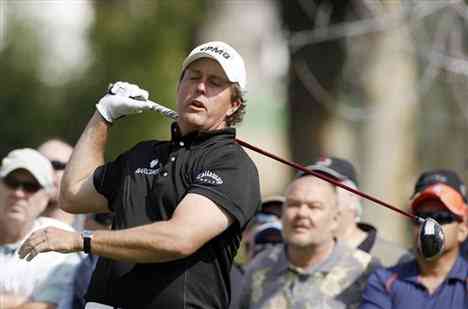


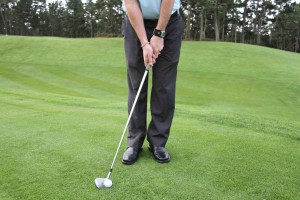
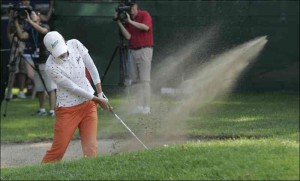
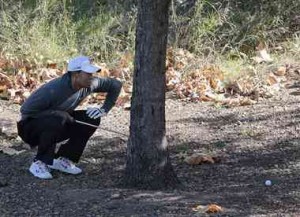

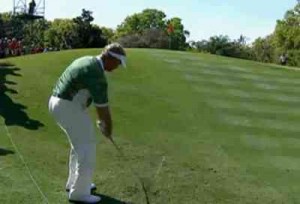














mike
Jan 15, 2013 at 2:37 am
awesome read. i was rolling the whole way. the hunter mahan thing killed me.
golfwrx has a great writer on there hands. Jeff, you have a great talent and sense of humor. great job.
mike skinner
Dec 14, 2012 at 12:58 pm
This is great!! We have all been in these spots once or a thousand times. We should just take the John Daly approach, when things go wrong just drink them away
Dan
Dec 12, 2012 at 6:54 pm
Fantastic. Are 8 mulligans too many?
Mike
Dec 12, 2012 at 7:23 am
Nice job!! I was laughing the whole way threw at some of the refrences :] especially the one about phil haha loved the dreded hozel rocket.
Dave
Dec 11, 2012 at 5:32 pm
Great article!
However, I must say… no mulligan is going to save a round from the dreaded hosel fade. You’ll just do the same thing twice in a row… after which you’re better off just quitting golf for a few months.